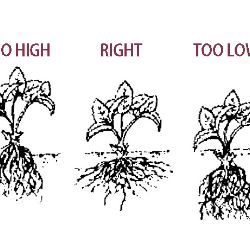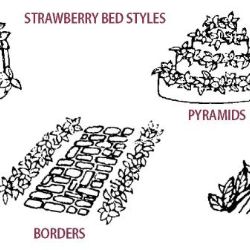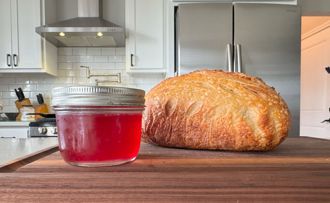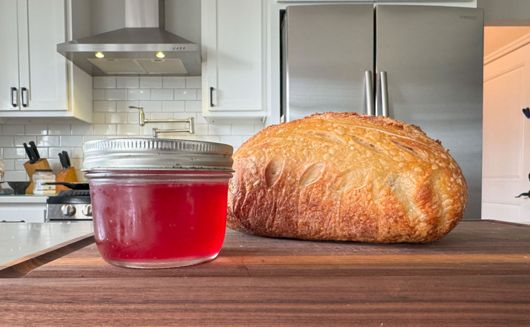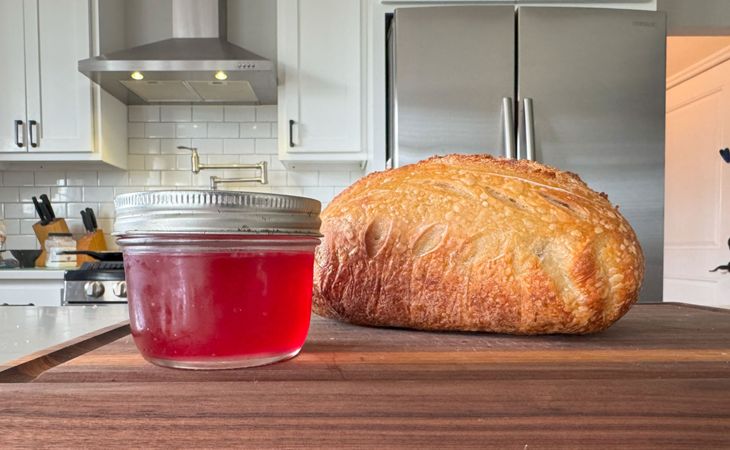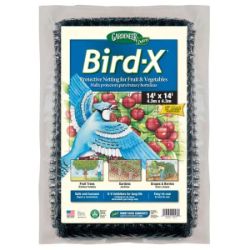Planting Strawberry Plants
Few things are as delicious as homegrown strawberries, and the success of your harvest begins right with the planting site and method. For maximum growth and yields later on, give your plants the best foundation possible.
NOTE: This is part 4 in a series of 11 articles. For a complete background on how to grow strawberry plants, we recommend starting from the beginning.
Before Planting
Before you plant, check your soil pH. Contact your local County Extension Office for information about soil testing in your area, or purchase one of our digital meters for quick and accurate results. Ideally, your strawberries need a soil pH between 5.3-6.5. Strawberries will thrive in nearly any garden soil, even doing well among sand or rocks., but steer clear of soils that are extremely heavy or poorly drained.
- Since strawberries are fussy about being too deep or too shallow, make sure the crown is planted just right.
- Firm the soil around each plant and water well with a starter solution of Stark® Strawberry Food.
Planting Tips
- Strawberries come in bare root bundles. When you receive your plants separate the bundled plants, remove any dried leaves at their tops and soak the roots in water for an hour or two before planting.
- Plant them early in spring, while the ground is still cool and moist, and in a sunny spot, if possible.
- Fan out the roots, keeping them straight down. (If the roots are long, you can trim them back to about 4 to 5”, before planting.)
- Plant the crown even with the soil line. Avoid planting too deep or too shallow.
- Firm the soil around each plant and water well with a starter solution of Stark® Strawberry Food.
First Year Blossoms
- We typically recommend you pinch off all blossoms during the first season, to save the plant’s strength for heavier bearing in following years. But as long as new plants get off to an early start and are growing well, you can leave on just a few flower buds. A few berries will not weaken the plants, and a small crop the first year is always welcome!
- For everbearing varieties, it’s best to remove all the early-season blooms. Then you can let the later blooms develop and harvest a crop in late summer the first year.
- During the summer, the plants will grow lots of runners. These will take root and become new plants. To keep your strawberry bed neat and to save a path down the middle, encourage these runners to stay within the row. Just lift the runner before it roots and head it in the right direction.
Planting Beds
There are three methods in which you can plant your berry patch: matted rows, hill rows or solid beds. Strawberries can also be grown in containers.
Matted Rows
- This is the most popular system in the northern and eastern states. The plants are set out in late winter and spring and are spaced 1½-2’ apart in rows with 3½-4’ between rows. The mother plants set at this spacing send out runners in all directions to make a mat 1½-2’ wide, and solid the whole length of the row. This system is best used by June-bearing varieties since the ever bearer types don’t set many runners. If you decide to use this system for everbearers, you should use the closest recommended spacing.
Hill Rows
- This system is used in areas where growth may continue most of the year. In the South and Gulf Coast states, the beds are made 8-10” higher. With single hill beds, the plants are spaced 1’ apart in the row with 3’ between rows. Put the outer rows 3-4’ apart. Plants utilizing this system are grown as annuals since runners are not produced and all fruit is harvested from the mother plants. Use Rapid Red Mulch Film as mulch with this system.
Solid Beds
- This is the ideal planting system for the backyard gardener with a small strawberry patch where it’s not necessary to walk between the rows. Set your plants about 10-14” apart in the row with the rows 1½-2’ apart. The runner plants will spread freely from the mother plants, and you’ll have solid strawberries. First-season cultivation is an important step in establishing a productive ongoing strawberry bed. Your plants should be covered with about 4-6” of straw; wheat straw is best. Don’t put your mulch down until the ground freezes through, because if put down too early, it will keep the plants from “hardening off” to winter’s blast. Come spring, rake this covering aside and use it as a ground cover to keep the strawberry bed moist and weed-free.
Containers
- Strawberries can also be grown in containers. Select a location with at least 5-6 hours of sun a day. Strawberries only need about 4-6 inches of soil for their roots so shallow containers will work. Whatever size or shape container you use, make sure they have adequate drainage holes in the bottom. Water your strawberry plants whenever the soil is dry to ½ inch depth. Do not over water as constant damp soil encourages disease, but don’t allow the plants to dry out either. If the plants produce runners, train them into the container so they will take roots, then plant into new pots to start fresh plants. Be sure to keep the soil around the new plants damp until roots are established. When the plants no longer produce well, replant your container with fresh soil and new plants.
Additional Notes
- If birds bother your berries, cover the bed with a Garden Net.
- We recommend replanting your strawberry beds every two to three years.
- For June bearing types, plant this spring, harvest next June. In early August, remove foliage by mowing at 3-4” height and fertilize. In the third spring, start a new bed. Harvest fruit in June on original bed. Destroy plants after the second harvest to prevent disease and since production goes down.
- For everbearing varieties, start harvesting in mid-summer of the first year. Start a new bed the next spring. Continue to harvest all summer long on the original bed then destroy it. The finest and best yields are from young vigorous plants that are allowed to crop for a maximum of two seasons.
- Life of plants 3-4 years with proper maintenance.
- Suggested number of plants for a family of 5: 100-150 (25 plants per person).

